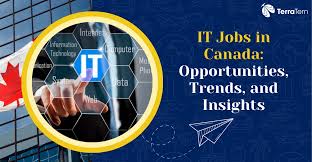Tech Jobs in Canada — 2025 Guide
Canada’s tech sector in 2025 is a landscape of opportunity and change. After several years of rapid expansion followed by a period of market correction, hiring has normalized but demand for skilled talent remains strong in specific roles and cities.
This guide breaks down where the jobs are, which roles are hottest, what you can expect to earn, how immigration and hiring programs work, and practical advice to land a role in Canada in 2025.
Quick snapshot (TL;DR)
-
Demand remains healthy for engineers and specialists in AI/ML, cloud, security, data, and DevOps, though hiring is more selective than the boom years.
-
Top tech hubs: Toronto–Waterloo, Vancouver, Montreal, Ottawa and an increasingly visible Calgary/Edmonton and Quebec City presence. Rankings have shifted slightly in 2025 as VC flows tightened.
-
Salaries: software engineers and experienced cloud/AI engineers commonly see base pay in the CA$80k–CA$180k band depending on city and seniority; total comp at large tech firms can be higher.
-
Immigration & hiring: Canada’s Global Talent Stream (fast work-permit processing), Express Entry and employer-specific work permits remain core routes for foreign tech talent. Government of Canada+1
-
Risk: the global tech contraction/layoffs trend affects Canada too; hiring managers value versatility, measurable impact, and cost-effectiveness.
Why Canada still matters for tech workers in 2025
Canada’s technology ecosystem is mature and diversified — from enterprise cloud and fintech to AI research and game studios.
Large global companies operate Canadian engineering centres while thousands of startups continue to form around incubators (MaRS, Communitech, etc.).
Even after some cooling of investment and episodic layoffs, employers still need talent for product delivery, infrastructure, security, and AI projects.
Labour-market reports and hiring surveys in 2025 show continued competition for certain high-skill roles, especially where supply is limited.
Most in-demand tech roles (where to focus)
Employers in 2025 are prioritizing roles that accelerate revenue or reduce operational risk. Key roles include:
-
Machine Learning / AI Engineers & Data Scientists — building and productionizing models, MLOps skills are especially valued.
-
Cloud Engineers / Platform / Site Reliability Engineers (SREs) — expertise in AWS, Azure, GCP, Terraform, Kubernetes.
-
Full-stack and Backend Software Engineers — especially with microservices, API design, and performance skills.
-
Cybersecurity Specialists — cloud security, application security, and compliance know-how.
-
DevOps / Automation Engineers — CI/CD, testing automation, observability—roles that speed delivery.
-
Product Managers & UX Engineers — those who can tie product decisions to measurable outcomes.
-
Data Engineers & Analytics Engineers — building data pipelines and enabling downstream analytics.
If you’re early career, focus on building a portfolio of projects and familiarity with cloud tooling. Mid-to-senior candidates should demonstrate production impact: latency improvements, cost savings, feature metrics, or model performance lifts.
Salaries & compensation — what to expect
Compensation depends heavily on city, employer (startup vs Big Tech), and seniority:
-
Software Engineers (all levels): national averages reported in 2025 typically center around CA$100k as a midpoint, with ranges from ~CA$75k (entry) to well over CA$170–200k+ at senior levels or large multinational tech firms when bonuses and equity are included.
-
Specialized roles (AI, Cloud, Security): top-of-market candidates can command significantly higher pay, especially in Toronto and Vancouver where competition is strongest.
Remember to factor in cost of living differences: Toronto and Vancouver are pricier than many secondary cities, while Waterloo, Ottawa, and Montreal can offer competitive salaries with lower housing costs.
Top cities & ecosystems in Canada (pros and cons)
-
Toronto–Waterloo Corridor — Canada’s largest cluster, with strong enterprise demand, scaleups, and research ties (universities). Best for AI, fintech, and large-company roles.
-
Vancouver — strong in cloud gaming, software, and sustainability tech; attractive lifestyle but higher housing costs.
-
Montreal — AI research hub with competitive costs for companies; good for ML/AI and games.
-
Ottawa & Waterloo — talent-rich for engineering and embedded systems; Waterloo’s startup culture remains influential.
-
Calgary / Edmonton / Quebec City — rising ecosystems benefiting from local incentives and lower operating costs; energy-tech and AI-for-industry opportunities are growing.
Ecosystem rankings saw some movement in 2025 as VC and talent flows adjusted—local strengths and business models now matter more than headline rank alone.
Hiring trends & market dynamics
-
Selective hiring after a correction: After aggressive hiring earlier in the decade and subsequent layoffs at some firms, companies are now balancing growth with profitability. That means hiring remains but with more emphasis on outcomes, cost control, and cross-functional skills.
-
Contract, remote, hybrid mix: Remote-first roles still exist (and broaden candidate pools), but many teams prefer hybrid models for collaboration—especially for complex systems work.
-
Startups vs established firms: Startups are more cautious with headcount and prefer versatile hires; large firms and platform companies continue to recruit for scale and reliability engineering.
-
Upskilling matters: Employers look for demonstrable cloud, security, and production ML skills. Short courses, certifications, and contributions to open-source can help bridge gaps.
Immigration, visas & fast tracks
Foreign tech talent continues to come to Canada through several channels:
-
Global Talent Stream (GTS) — a fast lane for employers to hire highly skilled foreign workers with expedited work-permit processing (often two weeks). It’s widely used by scaleups and innovative firms to fill roles on the Global Talent Occupations List.
-
Express Entry & Provincial Nominee Programs (PNPs) — for those targeting permanent residence. Some provinces offer tech-focused streams that prioritize candidates with Canadian job offers or in-demand skills.
-
Employer-specific work permits & intra-company transfers — large multinationals often move employees between offices using these routes.
If you’re an employer, GTS is a practical route to hire quickly. If you’re a candidate, securing a job offer from a Canadian company remains one of the fastest ways to move — and many firms will help with the visa paperwork.
Risks to watch (layoffs & macro)
Global macro pressure and sector adjustments mean tech jobs are not immune to layoffs. 2024–2025 saw many companies re-evaluate headcount; Canada experienced similar waves as global firms restructured local teams. Job seekers should prepare for volatility by building transferable skills, maintaining emergency savings, and keeping networks active.
How to make your application stand out (practical steps)
-
Tailor your resume to impact: Quantify results (performance improvements, cost savings, user metrics). Recruiters in 2025 prioritize candidates with measurable outcomes.
-
Show production experience: For AI and cloud roles, highlight projects that moved beyond prototypes to production. Use repositories, demos, and clear READMEs.
-
Demonstrate system thinking: SRE and platform roles require explaining system trade-offs, reliability metrics, and incident response experience.
-
Network in the right places: Participate in local meetups (virtual and in-person), GitHub projects, and university hiring channels (many Canadian firms recruit from top CS programs).
-
Understand Canadian hiring customs: Prepare for behavioral interviews, coding screens, and system-design conversations; be ready to discuss trade-offs in design and deployments.
-
Leverage immigration-friendly employers: Small and medium firms that frequently use the Global Talent Stream may be more open to sponsoring candidates—look for “we sponsor work permits” in job posts.
Upskilling roadmap for 2025 (what to learn)
-
Cloud fundamentals: IAM, compute and networking, container orchestration (Kubernetes), Terraform.
-
MLOps: model serving, monitoring, pipelines (Airflow/Prefect), model governance.
-
Security basics: secure coding, threat modeling, cloud security posture.
-
Data engineering: ETL, streaming pipelines, warehouse/analytics (BigQuery, Snowflake, Databricks).
-
Soft skills: communication, cross-team influence, product thinking.
Certificates help, but hands-on projects and demonstrable production work matter more.
For employers hiring tech talent in Canada
If you’re hiring in 2025:
-
Use the Global Talent Stream for rapid hires and ensure role descriptions map to the occupations list.
-
Emphasize career paths and stability—candidates compare compensation against retention and growth prospects.
-
Consider distributed teams to access talent beyond major cities, balancing salary vs cost-of-living trade-offs.
Outlook: what to expect the rest of 2025 and beyond
-
Steady, targeted hiring: Expect continued demand in AI, cloud, security and data, but with more selective, outcome-driven hiring.
-
Geographic diversification: Secondary cities and provincial hubs will grow as companies seek lower operating costs and new talent pools.
-
Skills over pedigree: Employers will prefer candidates who can show production impact and cost-conscious engineering.
-
Immigration remains a competitive advantage: Canada’s streamlined streams like GTS mean employers can access global talent quickly — this will continue to shape hiring.
Final checklist — if you want a tech job in Canada in 2025
-
Build a portfolio with production-ready projects (cloud-based demos, deployed services, monitoring dashboards).
-
Target roles in AI, cloud, security, data or SRE depending on skills.
-
Research employers that use the Global Talent Stream or have a history of sponsoring talent.
-
Prepare for technical interviews that evaluate system design and production experience.
-
Keep updating your skills and network—both are decisive in a more selective market.
Resources & further reading
-
Government of Canada — Global Talent Stream program details and applicant guide.
-
Job Bank (Employment and Social Development Canada) — occupation outlooks for software engineers and IT managers.
-
Market & salary aggregates: Glassdoor and Levels.fyi for salary benchmarks.
-
Industry reports & hiring trends: Robert Half and TechNation/CareerFinder listings of in-demand roles.
-
Layoff trackers and market context: TrueUp and TechCrunch summaries of 2024–2025 adjustments.
Conclusion:
Canada in 2025 offers real opportunities for tech professionals — but the game has changed from the headline-boom years. Focus on demonstrable production impact, cloud and security skills, and pick cities or firms that match your priorities (growth vs stability, salary vs cost of living).
With the right combination of technical depth, practical experience, and immigration know-how, landing a satisfying tech role in Canada this year is very achievable.










